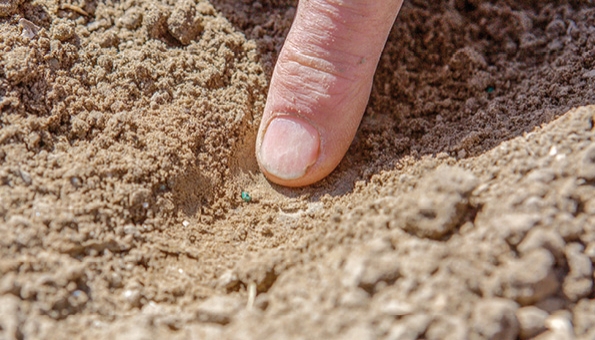homespun craftsmen
To be eligible for growing Holland Onions a parcel must comply with a great number of strict conditions. A mineral test determines the nitrogen, potassium and phosphate content present in the soil. In the right combination these minerals are indispensable for a healthy growth. Seed onions prefer sandy clay to light clay soil with the right structure, organic dust content and natural soil hydrology. It is essential of course that no stem nematodes are present in the parcel and that the soil is not contaminated by white rot, fusarium or other pathogens.
To keep a parcel which is free of diseases and plagues truly healthy, extensive crop rotation is necessary. Dutch onion growers follow a strict rotation schedule and an onion cultivation frequency of at most 1 out of 7 years. The soil assessment and the tillage are one of the success factors of the Holland Onion requiring a lot of expertise and attention.
Onions require a shallow seedbed that is also well crumbled. The basis for this can only be established with a ‘billiard cloth’ of plow work. The circumstances under which the seedbed is realized, contribute to the growth performance of the Holland Onion.
It is therefore of great importance that we do not begin with the tillage for the bed cultivation until the soil is sufficiently dry. If the substrate is too moist this creates an unhealthy breeding ground, resulting in an uneven or deviating growth and unnecessary damage to the crop.
